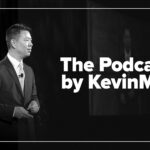Primum non nocere, “first, do no harm,” is the prime directive of medical ethics for all physicians. It is also the first thing that comes into question when maleficence by a doctor is suspected.
The standard of care is how any prudent and competent practitioner should exercise their duty to, “first, do no harm,” when managing a specific medical condition. The standard of care is empirical and adjusts to circumstances that present at the initiation of, or during the course of, a patient encounter.
This definition presumes that the duty to, “first, do no harm,” is a continuance of more specific duties that arise from the first encounter to the last. In fact, there are ten specific duties.
These duties include: (1) the duty to determine all risks that present at the initial encounter, (2) the duty to perform a complete medical workup, which examines these risks, (3) the duty to analyze the results from the medical workup and to determine their relevance to these risks, (4) the duty to prepare a working diagnosis or diagnoses that apply to these risks, (5) the duty to determine a plan of management with alternative treatments for the diagnosis or diagnoses and to select the safest and most effective alternative, (6) the duty to acknowledge patient autonomy, to disclose all risks and complications to the patient and to recommend the safest, most effective treatment, (7) the duty to cautiously manage the selected treatment and to avoid unnecessary risks, (8) the duty to manage the progress of the technical phase and to avoid and/or manage any risks that arise afterward, and (9) the duty to identify and provide follow-up care for any risks that remain at the final encounter.
The medical intervention is how any prudent and competent practitioner actually exercises their duty to, “first, do no harm,” when managing a specific medical condition given the circumstances. Basically, a medical intervention is a facsimile of the standard of care after doctors adjust to given circumstances. There is an overriding 11th duty — the duty to take appropriate actions by considering a risk/benefit ratio when making an adjustment. This duty is always implied in the standard of care.
Because the ten duties are contiguous, when one duty is satisfied, the next duty begins. Each duty represents a phase of management. Both the standard of care and the medical intervention can be divided into ten counterpart phases that relate to each duty: (1) the presentation phase, (2) the investigation phase, (3) the analytical phase, (4) the diagnostic phase, (5) the options phase, (6) the informed consent phase, (7) the selection phase, (8) the technical phase, (9) the recovery phase, and (10) the discharge phase. The aforementioned 11th duty can arise in any phase.
When there is an issue of maleficence, each phase in the standard of care can be compared to its counterpart in the medical intervention. A difference should be obvious and, if the difference is an adjustment to circumstances or a medical error, it should also be obvious.
I offer these ten phases as a standard for patient management.
Howard Smith is an obstetrics-gynecology physician.


















![Corporate greed and medical complicity fueled a $250,000 drug [PODCAST]](https://kevinmd.com/wp-content/uploads/The-Podcast-by-KevinMD-WideScreen-3000-px-4-190x100.jpg)
